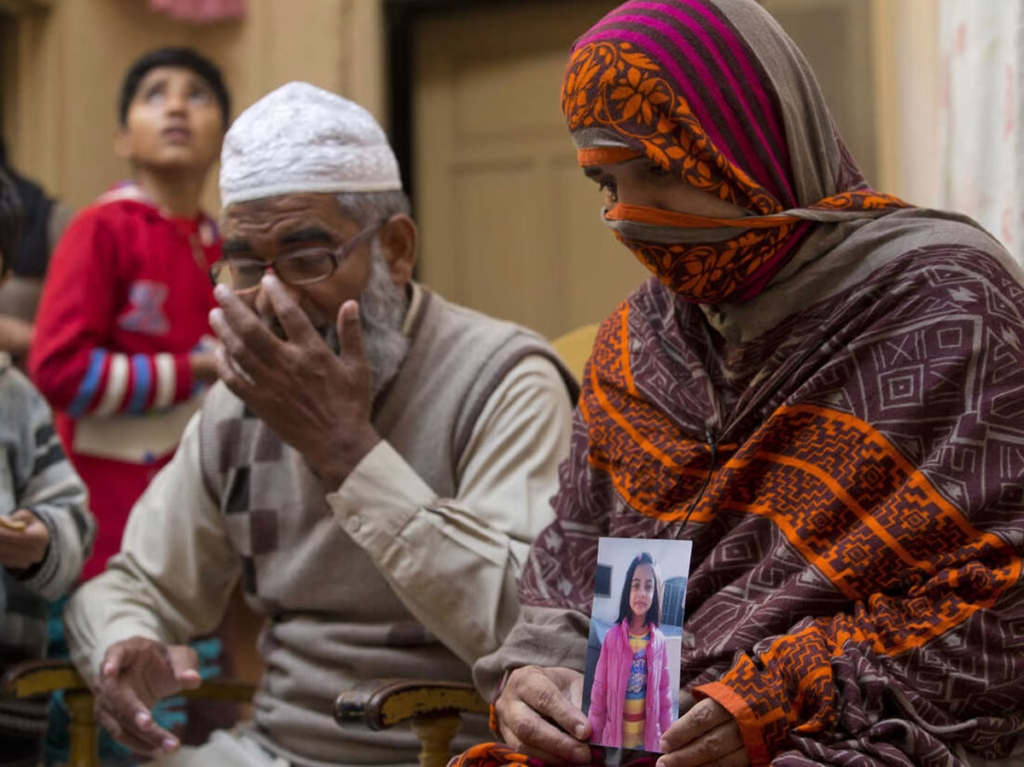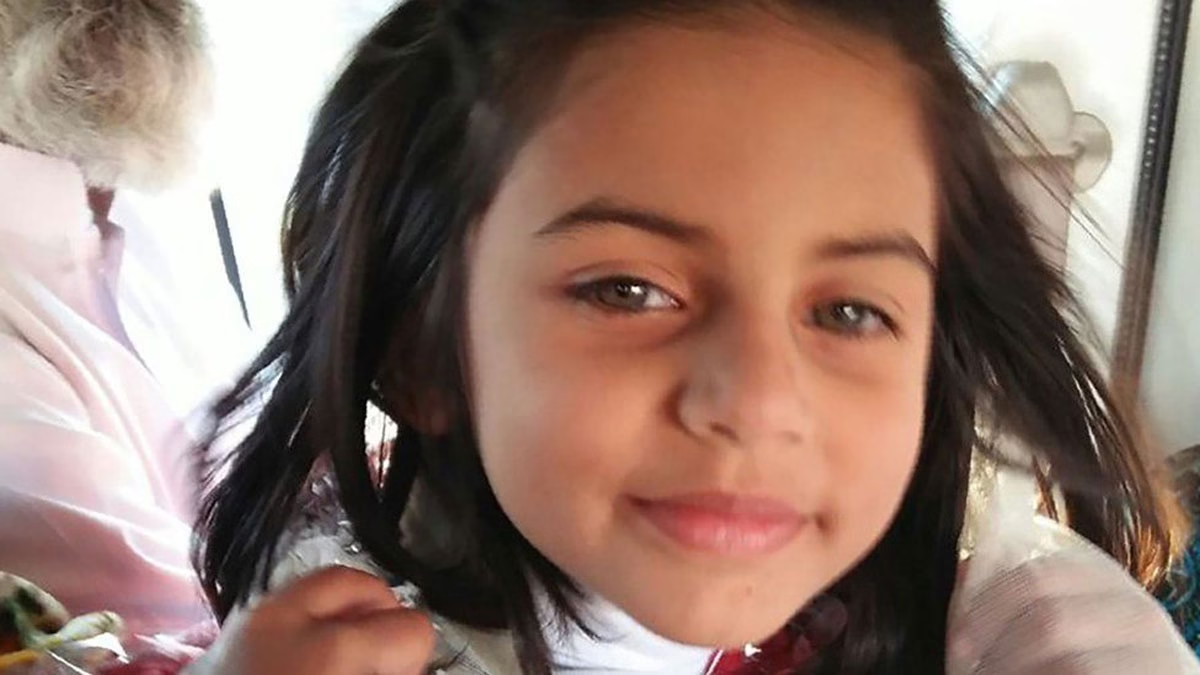Kasur Child Abuse Scandal
The rape and murder of Zainab Ansari in January 2018 became a pivotal moment in the context of Kasur’s child abuse crisis, galvanizing nationwide outrage and exposing systemic failures.
The Kasur child sexual abuse scandal came to light in 2015, though the abuses had been occurring from 2006 to 2014 in Hussain Khanwala village, Kasur District, Punjab, Pakistan. It involved an organized crime ring that sexually abused an estimated 280 to 300 children, predominantly boys, over several years. The perpetrators filmed hundreds of video clips—up to 400—showing children being forced into sexual acts. These videos were then sold as child pornography to international websites and used to blackmail and extort the victims’ families. In one reported instance, a father paid PKR 1.2 million to prevent the release of a video showing his son being raped.
Who Was Behind These Abuses and Who Supported Them?
The scandal implicated a gang of 20 to 25 men who operated this criminal network. While specific names of all members are not consistently detailed in public records, the group was described as an organized entity exploiting the vulnerability of children in the area. Allegations surfaced that the Punjab police and Malik Ahmad Saeed Khan, a Member of the Provincial Assembly (MPA) from the ruling Pakistan Muslim League (Nawaz) (PML-N), were involved in an attempted cover-up. These claims suggested that local authorities may have protected the perpetrators, either through inaction or direct complicity, though concrete evidence of individual involvement remains limited in public sources. The scale of the operation and the lack of earlier intervention fueled suspicions of systemic negligence or support from influential figures.
Did the Police or Government Take Any Action Against Them for So Long?
For years, little to no effective action was taken. The abuse continued from 2006 to 2014 without significant police intervention, and it was only in 2015, after media exposure and public outrage, that the scandal gained national attention. On August 8, 2015, villagers clashed with police in Dolaywala village, protesting the authorities’ failure to dismantle the abuse ring, resulting in injuries on both sides. Initially, Punjab’s Law Minister Rana Sanaullah denied the allegations, claiming a government inquiry found no evidence of child sexual abuse and attributing reports to a land dispute. However, this stance was widely criticized as an attempt to downplay the crisis.
Due to mounting pressure, Punjab Chief Minister Shehbaz Sharif ordered a judicial inquiry on August 9, 2015, requesting the Lahore High Court to investigate. Despite this, the response was slow and inadequate. Some perpetrators were arrested, but many were later released, and only a few convictions were secured. For instance, in August 2017, an anti-terrorism court acquitted four suspects, highlighting the prosecution’s failure to provide sufficient evidence. The lack of sustained action and the release of suspects underscored a broader failure in the criminal justice system to address the scandal effectively.
Zainab Ansari Case (2018)
The rape and murder of Zainab Ansari in January 2018 became a pivotal moment in the context of Kasur’s child abuse crisis, galvanizing nationwide outrage and exposing systemic failures.
How Did This Happen?

Zainab Amin Ansari, a seven-year-old girl, was abducted on January 4, 2018, in Kasur while heading to Quran recitation classes. Her parents were on a pilgrimage in Saudi Arabia, leaving her in the care of relatives. CCTV footage later showed her walking hand-in-hand with an unidentified man, suggesting she may have been lured by someone she recognized. She was missing for five days before her body was discovered on January 9, 2018, in a garbage dump near Shahbaz Khan Road, close to her home. An autopsy revealed she had been raped, tortured, and strangled to death, with evidence indicating the murder occurred days earlier.
Who Was Behind This Incident?
The perpetrator was identified as Imran Ali, a 24-year-old resident of Kasur and a neighbor of Zainab’s family. Following his arrest on January 23, 2018, DNA evidence linked him to Zainab’s murder and at least seven other rapes and murders of young girls in the region over the previous two years. Ali confessed to these crimes, establishing him as a serial killer targeting prepubescent girls. There were speculations, including a local TV report, that he might have been part of a larger child abuse network with international ties, possibly linked to the earlier Kasur scandal. However, no definitive evidence confirmed this connection, and investigations focused primarily on Ali as an individual offender.
Did the Police or Government Take Action?
Initially, the police response was criticized as inadequate. Zainab’s father, Ameen Ansari, accused the authorities of doing little during the five days she was missing, claiming they only visited to eat and leave while relatives and neighbors searched tirelessly. It was Zainab’s family, not the police, who recovered crucial CCTV footage that aided the investigation. Public fury erupted after her body was found, leading to violent protests in Kasur on January 10, 2018, during which two protesters were killed in clashes with police, who allegedly fired on the crowd. Four officers were arrested for this incident.
The outrage prompted swift government action. Punjab Chief Minister Shehbaz Sharif sacked Kasur’s District Police Officer (DPO) Zulfiqar Hameed for negligence and vowed to bring the perpetrator to justice. Chief Justice of Pakistan Mian Saqib Nisar took notice of the case, demanding a report from Punjab’s Inspector General of Police within 24 hours. Imran Ali’s arrest came after a DNA match, announced by Sharif on January 23, 2018. On February 17, 2018, an anti-terrorism court in Lahore sentenced Ali to four counts of death, life imprisonment, a seven-year term, and fines totaling PKR 3.2 million for Zainab’s murder and other crimes. He was executed by hanging on October 17, 2018, in Lahore’s Kot Lakhpat prison, with Zainab’s father present.
Did This Case End or Not?
The Zainab Ansari case concluded with Imran Ali’s execution, delivering justice for her murder and related crimes. Her death also spurred legislative change, leading to the Zainab Alert, Response and Recovery Act (passed in 2020), which mandates rapid police response to missing children cases and imposes life imprisonment for child abusers. However, the broader issue of child abuse in Kasur and Pakistan persisted beyond this resolution.
Post-2018 Situation in Kasur
Since 2018, Kasur has continued to report incidents of child abuse, indicating that while Zainab’s case led to some reforms, the underlying problem remains unresolved.
Have Such Incidents Been Reported Again After 2018?
- September 2019: The bodies of three boys were found in Kasur, suspected to have been raped and murdered. A rickshaw driver, Sohail Shahzad, confessed to abducting, raping, and strangling four boys in Chunian, Kasur District. This case reignited fears of serial offenders and prompted Punjab Chief Minister Usman Buzdar to seek a police briefing, though systemic improvements remained limited.
- General Trends: Rights organizations like Sahil reported 2,300 child abuse cases across Pakistan in the first half of 2018 alone, with Kasur frequently highlighted due to its history. Post-2018, Kasur has remained under scrutiny, with activists noting that child labor, poverty, and weak law enforcement continue to make it a hotspot for such crimes.
Why Do These Incidents Persist?
Experts attribute Kasur’s recurring incidents to multiple factors:
- Weak Implementation: Despite stronger laws (e.g., the Zainab Alert Act), implementation is inconsistent. Police often lack training, resources, and female officers to handle child cases sensitively.
- Cultural Taboos: Silence around sexual abuse leaves children vulnerable and perpetrators emboldened.
- Systemic Failures: Corruption, inefficiency, and low prioritization of child protection by authorities perpetuate the cycle. The National Commission on Human Rights noted that recommendations post-2015 were largely ignored.
- Socioeconomic Conditions: Kasur’s poverty and reliance on child labor expose children to predators.
While the Zainab case brought temporary focus and some legal advancements, activists argue that without sustained, multi-pronged efforts—such as awareness campaigns, better policing, and support for victims—the situation in Kasur remains precarious. Incidents continue to surface, though none have matched the national attention of Zainab’s case, suggesting both underreporting and a lack of systemic change.
In summary, the Kasur Child Abuse Scandal exposed a criminal network with possible official complicity, met with delayed and insufficient action. Zainab’s 2018 murder, committed by Imran Ali, ended with his execution, but subsequent incidents indicate that Kasur’s child protection crisis persists as of March 27, 2025.
Read another Article: A Complete Story Javed Iqbal The Serial Killer



